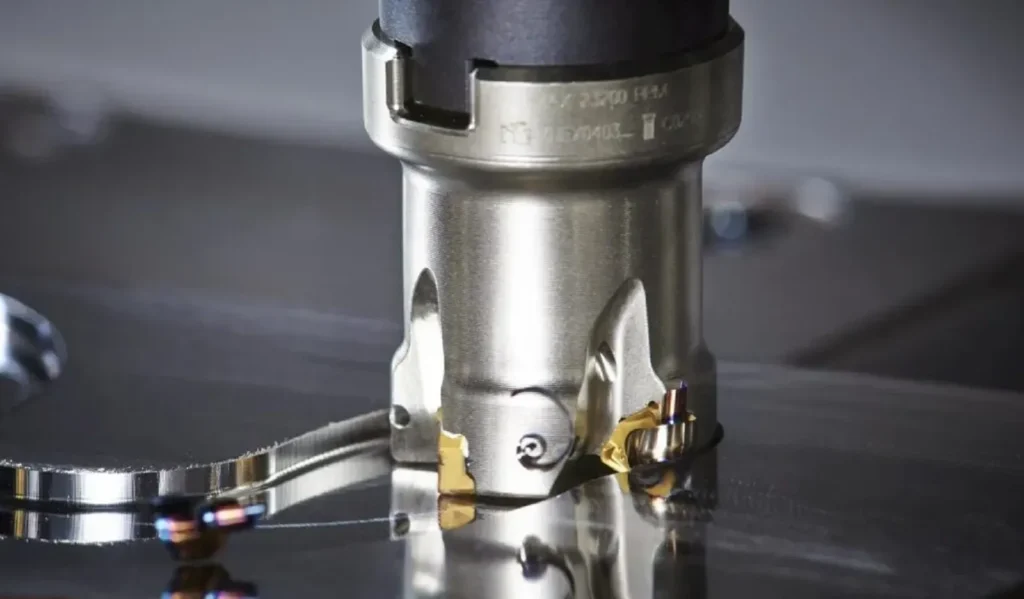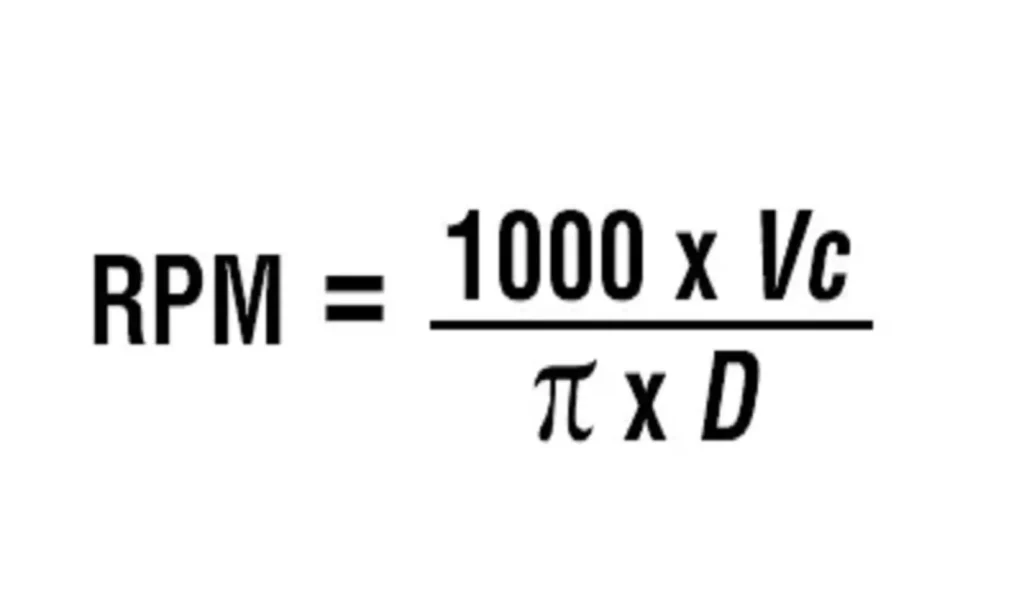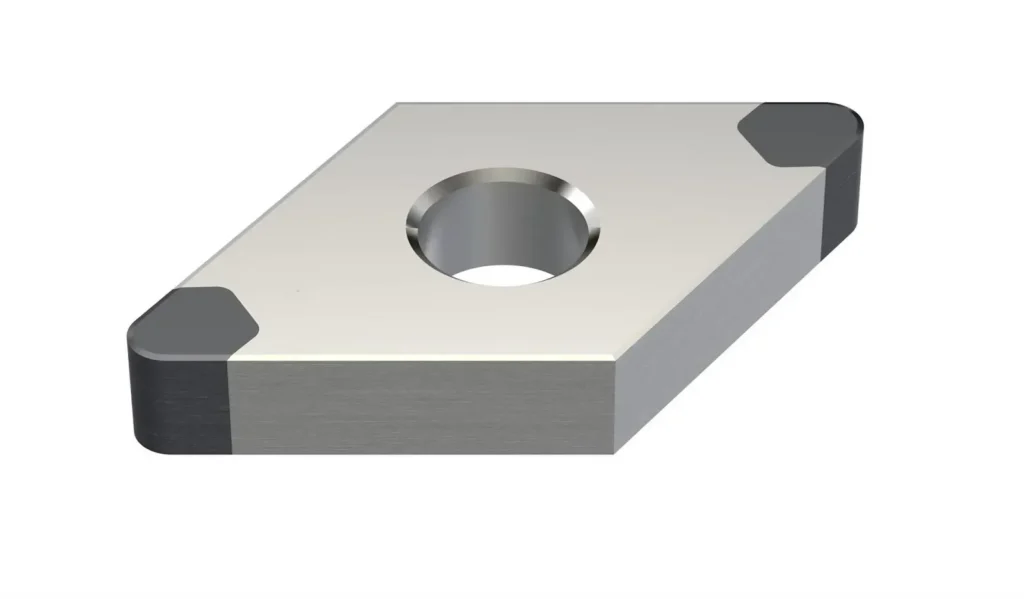Оптимизация чистовой обработки стали: лучший радиус вставки для чистового фрезерования стали
В мире металлообработки достижение идеальной чистоты поверхности стальных деталей является важнейшей задачей для производителей всех отраслей. Одним из ключевых факторов в этом стремлении является выбор оптимального радиуса пластины для чистового фрезерования стали. Этот часто упускаемый из виду аспект оснастки может существенно повлиять на качество конечного продукта, долговечность инструментов и общую производительность. В этом подробном руководстве мы рассмотрим все тонкости выбора радиуса пластины и предоставим вам знания для оптимизации процессов чистовой обработки стали.

Понимание радиуса вставки при фрезеровании
Прежде чем углубляться в детали оптимального радиуса пластины для чистового фрезерования стали, необходимо понять, что означает радиус пластины в контексте фрезерных операций. Радиус пластины относится к кривизне режущей кромки фрезерная вставка. Этот радиус играет решающую роль в определении взаимодействия между инструментом и заготовкой, влияя на такие факторы, как режущие силы, образование стружки и качество поверхности.
Типы радиусов вставки включают:
- Острый (нулевой радиус)
- Малый радиус (обычно 0,2-0,8 мм)
- Средний радиус (0,8-1,6 мм)
- Большой радиус (1,6 мм и выше)
Каждый тип имеет свой набор преимуществ и идеальные области применения, что делает процесс выбора критически важным для достижения оптимальных результатов.
Факторы, влияющие на оптимальный радиус пластины для чистовой фрезерной обработки стали
Выбор оптимального радиуса пластины для чистового фрезерования стали - это не универсальное предложение. При определении оптимального радиуса для конкретного применения учитывается несколько факторов:
- Свойства и состав стали: Различные марки стали имеют разную твердость, пластичность и микроструктуру, что влияет на идеальный радиус вставки.
- Параметры резания: Такие факторы, как скорость резания, подача и глубина резания, взаимодействуют с радиусом пластины и влияют на процесс фрезерования.
- Возможности станка: Жесткость и мощность вашего фрезерного станка могут ограничить или расширить ваши возможности по выбору радиуса вставки.
- Требования к шероховатости поверхности: Желаемая шероховатость поверхности и спецификации допусков определяют выбор радиуса вставки.
Понимание этих факторов имеет решающее значение для принятия обоснованного решения о выборе оптимального радиуса вставки для ваших операций по обработке стали.
Оптимальный диапазон радиуса вставки для финишной обработки стали
Хотя конкретный оптимальный радиус пластины для чистового фрезерования стали может варьироваться в зависимости от вышеуказанных факторов, существуют общие рекомендации, которые могут послужить отправной точкой для оптимизации:
- Для общих операций по обработке стали часто подходит радиус пластины от 0,4 до 1,2 мм.
- При обработке более мягких сталей можно использовать меньшие радиусы (0,4-0,8 мм) для достижения более тонкой обработки поверхности.
- Для более твердых сталей часто требуются большие радиусы (0,8-1,2 мм), чтобы выдержать повышенные усилия резания.
Важно отметить, что эти диапазоны не являются абсолютными, и для достижения наилучших результатов необходима точная настройка в соответствии с вашими конкретными требованиями и условиями.
Преимущества правильного выбора радиуса вставки
Выбор оптимального радиуса пластины для чистового фрезерования стали дает множество преимуществ:
- Улучшение качества обработки поверхности: Правильно подобранный радиус может значительно повысить гладкость и качество обработанной поверхности.
- Увеличение срока службы инструмента: Правильный выбор радиуса уменьшает износ режущей кромки, что приводит к увеличению срока службы пластин.
- Повышенная производительность: Оптимизированные радиусы пластин позволяют увеличить скорость подачи без ухудшения качества поверхности, что повышает общую эффективность.
- Снижение сил резания: Правильно подобранный радиус позволяет минимизировать силы резания, снижая нагрузку на инструмент и станок.
- Лучший контроль стружки: Соответствующий радиус пластины способствует правильному образованию и отводу стружки, предотвращая такие проблемы, как повторное срезание стружки.
Общие проблемы и решения
Даже при тщательном выборе оптимального радиуса пластины для чистового фрезерования стали могут возникнуть проблемы. Вот некоторые распространенные проблемы и возможные решения:
- Болтовня и вибрация:
- Проблема: чрезмерная вибрация, приводящая к ухудшению качества обработки поверхности.
- Решение: Рассмотрите возможность увеличения радиуса пластины или настройки параметров резания для снижения сил резания.
- Отклонение инструмента:
- Проблема: изгиб инструмента, приводящий к неточности размеров.
- Решение: Выберите меньший радиус пластины или увеличьте жесткость инструмента за счет более коротких свесов или более жестких держателей.
- Управление чипом:
- Проблема: Плохой отвод стружки, приводящий к дефектам поверхности или повреждению инструмента.
- Решение: Экспериментируйте с различными радиусами вставки и геометрией стружколомателя, чтобы оптимизировать образование стружки.
Лучшие практики выбора радиуса вставки
Чтобы убедиться в том, что вы используете лучший радиус пластины для чистового фрезерования стали, обратите внимание на следующие передовые методы:
- Проконсультируйтесь с производители инструментов: Используйте их опыт и ресурсы для определения вашего первоначального выбора.
- Проведите тщательные испытания: Проведите контролируемые испытания с различными радиусами пластин, чтобы найти оптимальный баланс между качеством обработки поверхности, сроком службы инструмента и производительностью.
- Контролируйте и корректируйте: Постоянно оценивайте эффективность и будьте готовы вносить коррективы, основываясь на реальных результатах.
- Рассмотрите всю систему оснастки: Радиус пластины - это только одна часть уравнения. Убедитесь в совместимости с резцедержателем, станком и всей системой.
- Уравновешивайте компромиссы: Признайте, что между качеством обработки поверхности, стойкостью инструмента и производительностью могут быть компромиссы. Определите приоритеты, исходя из ваших конкретных требований.
Примеры из практики: Успешное внедрение оптимальных радиусов вставки
Чтобы проиллюстрировать влияние выбора оптимального радиуса пластины для чистового фрезерования стали, рассмотрим два реальных примера:
- Пример из автомобильной промышленности: Производитель высокопроизводительных компонентов двигателей боролся с нестабильной чистотой поверхности стальных гильз цилиндров. Оптимизировав радиус вставки с 0,4 мм до 0,8 мм, они добились улучшения качества поверхности на 30% и увеличения срока службы инструмента на 25%.
- Применение в аэрокосмической отрасли: Поставщику аэрокосмических деталей требовалось повысить эффективность процесса фрезерования стальных турбинных лопаток. Тщательно подобрав радиус пластины 1,2 мм, они смогли увеличить скорость подачи на 40% при сохранении требуемой чистоты поверхности, что привело к значительному повышению производительности.
Эти примеры демонстрируют ощутимые преимущества подбора оптимального радиуса пластины для конкретных задач по обработке стали.
Будущие тенденции в технологии радиуса вставки
По мере развития производственных технологий мы можем ожидать появления инноваций, которые еще больше усовершенствуют процесс выбора оптимального радиуса пластины для чистового фрезерования стали:
- Современные покрытия: Новые технологии нанесения покрытий могут позволить использовать более агрессивные радиусы пластин без ущерба для срока службы инструмента.
- Нестандартные геометрии пластин: Производители могут предложить более специализированные конструкции пластин, разработанные с учетом конкретных марок стали и требований к чистовой обработке.
- Оптимизация на основе искусственного интеллекта: Алгоритмы машинного обучения могут в режиме реального времени давать рекомендации по корректировке радиуса вставки на основе данных датчиков и исторических показателей.
- Пластины с гибридным радиусом: Пластины с переменным радиусом вдоль режущей кромки могут обеспечить повышенную универсальность для различных условий резания.
Заключение
Выбор оптимального радиуса пластины для чистового фрезерования стали - важнейший аспект оптимизации производственного процесса. Понимание факторов, влияющих на выбор радиуса, осознание преимуществ правильной оптимизации и следование лучшим практикам позволят вам значительно улучшить операции по чистовой обработке стали.
Помните, что поиск идеального радиуса пластины часто является итеративным процессом, требующим тщательного учета ваших конкретных потребностей и условий. Постоянно оценивайте и совершенствуйте свой подход, чтобы добиться наилучших результатов с точки зрения качества обработки поверхности, срока службы инструмента и общей производительности.
Поскольку технологии продолжают развиваться, будьте в курсе последних разработок в области проектирования пластин и методов фрезерования. Сочетая свой опыт с передовыми инструментами и методиками, вы будете хорошо подготовлены, чтобы уверенно и точно решать даже самые сложные задачи по обработке стали.



